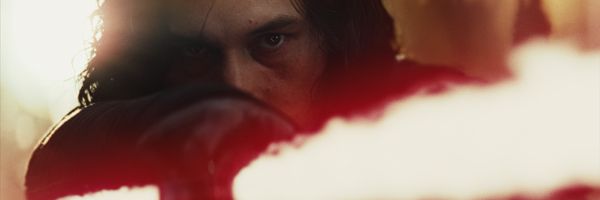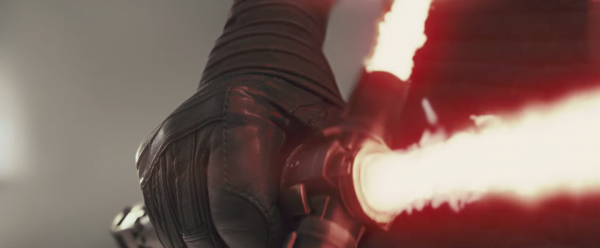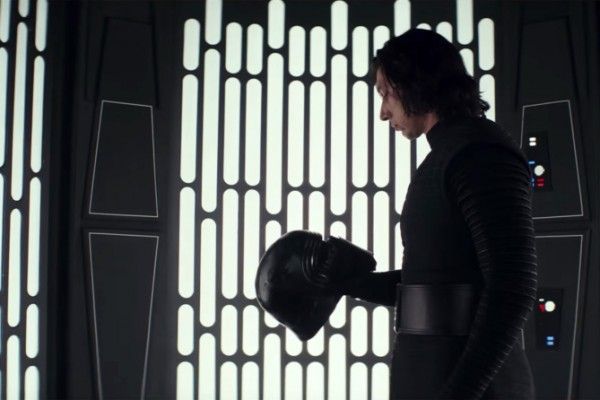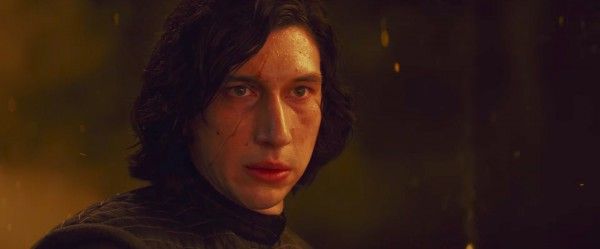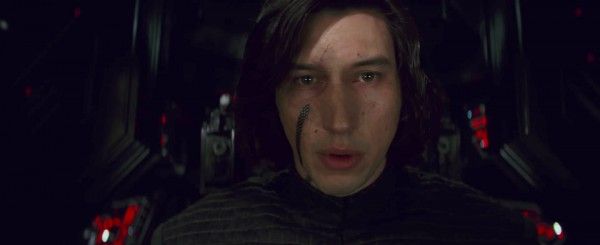Spoilers ahead for Star Wars: The Last Jedi.
In the wake of Star Wars: The Last Jedi, some fans saw Rian Johnson’s disruptive sequel as a manifestation of Kylo Ren’s claim of “Let the past die. Kill it, if you have to.” And yet Johnson’s movie is really more about making peace with the past in order to build the future, and you can see in all of Kylo Ren’s actions the problems of being dominated by your past. It’s a sensible character arc, but also one that shows the dangers of letting all your actions be determined by what came before rather than building your own future.
Everything Kylo does is determined by the past rather than formulating what he personally wants. His rebellion began because he rejected Luke Skywalker, Han Solo, and Leia Organa, but rather than run to something completely separate, he went even further into the past, trying to be a new Darth Vader. He then he went even further into trying to “kill the past” by killing his father, Han Solo, but that only created more doubt and angst inside of him. Rather than being freed by murder, it further consumed Kylo Ren. If it hadn’t, and if it had truly set him free, he probably would have been able to pull the trigger on killing Leia in The Last Jedi. Instead, he hesitates and ambivalently lets other First Order ships do his dirty work.
All of these actions make perfect sense for Kylo Ren, a man with an impossible legacy—what do you do when your parents and your uncle saved the galaxy?—but it also shows that he, more than anyone else in the current Star Wars saga, is completely dominated by the past and he can’t “kill it” because it determines all of his actions. It’s almost charmingly simple-minded that he thinks killing father figures will set him free, and yet it leaves him even more adrift every time. Trying to “kill the past” is like, as Last Jedi marvelously shows, trying to strike at an illusion. You’ll end up tired, frustrated, and ultimately, with nothing to show for it.
But The Last Jedi isn’t a movie about why “killing the past is good,” despite Johnson’s iconoclastic tendencies. If anything, his movie goes back to the roots of A New Hope, tossing out the family oligarchy where only Skywalkers are important and instead saying that anyone can be a hero. The slave child looking out on the stars is Luke looking out over the twin suns of Tatooine. Additionally, Rey can’t grow as a character until she finally accepts her past—that she doesn’t have some grand legacy, and that her parents discarded her. The past isn’t unimportant; it’s what you choose to do with that information.
For Kylo Ren, he’s chosen the most destructive path possible. His desire to “let the past die” is understandable. Without a past, he’s no longer beholden to an impossible legacy. If he kills the past himself, he can make sure that it’s dead and it will only be his future going forward. But the past never dies, and when Luke mockingly says, “See you ‘round, kid,” it’s not just an acknowledgement that Kylo lost. It’s an acknowledgement of Kylo’s greatest fear—that the figures he thought he could never live up to will always be with him.
For more on Star Wars: The Last Jedi, click on the links below:
- How ‘Star Wars: The Last Jedi’ Expands Force Powers without Cheating the Audience
- How ‘Star Wars: The Last Jedi’ Improves upon the Prequels
- ‘Star Wars: The Last Jedi’ Creature Designer Neal Scanlan on Porgs, Fathiers, and Green Milk
- Mark Hamill Clarifies His Public Criticism of Luke Skywalker in ‘Star Wars: The Last Jedi’
- ‘The Last Jedi’ VFX Supervisor Ben Morris on the Throne Room, Kyber Crystals and More

